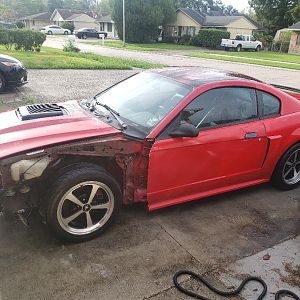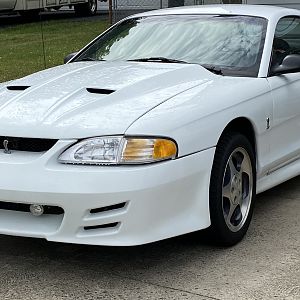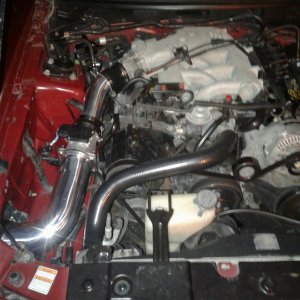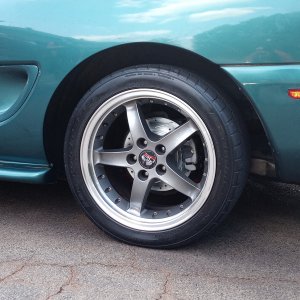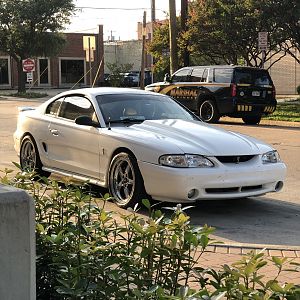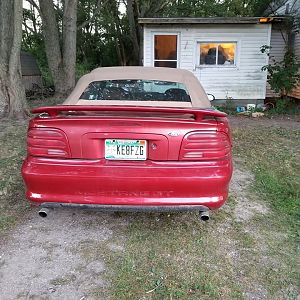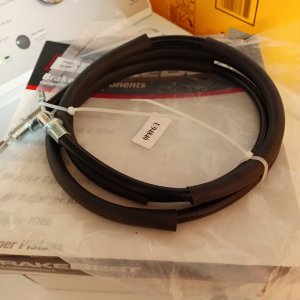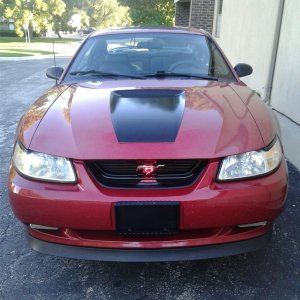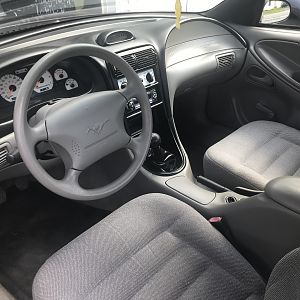Superchargers 101 - Introduction to Superchargers
A supercharger is essentially a large pump that compresses air and forces it into the engine's air intake. Turbochargers do the same thing, only they are run by exiting exhaust gasses, while superchargers are powered by the engine's spinning crankshaft, normally via the accessory belt. Originally built for World War II aircraft, superchargers have become very common in today's performance automotive world, and featured as original equipment on some new sports cars straight from the factory!
Superchargers have become popular in recent years for several reasons, including cost efficiency, reliability, and of course, performance. Supercharging an engine often results in huge power increases in the range of 50% to 100%, making them great for racing, hauling heavy loads, or just having fun in your daily driver. Although superchargers carry a fairly high ticket price when compared to other single performance upgrades ($1500 - $4000), nothing provides more horsepower for your dollar... in fact, nothing even comes close. And because of the way superchargers work, they provide power only when the engine is under full throttle or under load... not under normal cruising conditions. This means that the supercharger will not affect the engine's reliability, longevity, or fuel economy under normal driving conditions.
Most of the superchargers sold today are centrifugal-style superchargers, which are internal-compression superchargers, meaning they create the boost (compress the air) inside the supercharger head unit (blower) before discharging it into the engine's air intake. External compression superchargers (roots or screw-type superchargers - Whipple, Kenne Bell, Jackson Racing, Eaton) have become less popular as centrifugal superchargers have evolved. Centrifugal superchargers (Vortech, Paxton, Powerdyne, ATI ProCharger) are more reliable, especially at higher boost levels, and are capable of creating much more boost than external compression superchargers, while creating a much cooler intake charge (which results in an even denser intake charge).
Supercharger Impeller Boost is created at the point when the supercharger's internal impeller pushes enough air through the blower to overcome the vacuum force naturally created by the engine's air intake, so air is being forced, rather than pulled, into the air intake. Boost is measured in pounds per square inch, or psi. More boost equates to a more dense air charge into the engine's combustion chamber, which allows the engine to burn more air and fuel and create more horsepower. Most street superchargers produce somewhere in the range of 6 to 9 psi, meaning they produce 6 to 9 additional pounds of pressure over the atmospheric pressure at that elevation (at sea level atmospheric pressure is 14.7 psi).
Many people assume that running a supercharger, and hence added intake boost, puts added strain on an engine's engine parts. This is not necessarily true, because engine damage is almost always caused by RPM. Because a supercharger helps the engine produce more power at lower RPM, supercharged engines will make the same horsepower as their naturally aspirated counterparts at substantially lower engine RPM, where today's street engine's are designed to run (around 6000 RPM). Another concern some people have towards using a supercharger is that they think it will increase the engine's compression to the point that it will cause detonation inside the combustion chamber. Detonation exists when the combustion pressure is raised so high that the inlet charge ignites itself before the spark plug fires. When this happens, combustion takes place while the piston is still traveling up in the cylinder bore, which puts tremendous loads on the piston, rod, and crank. While it is true that a supercharged engine creates boost and increases the engine's compression, most supercharger kits include a boost timing retard chip that retards the engine's ignition timing under certain conditions to prevent detonation. With some kits, detonation is not a concern, in which case the kit will not include a boost timing retard chip.
Supercharger impellers on centrifugal superchargers are spun via an external pulley that is normally driven from the engine's accessory belt. Because the supercharger pulley needs to spin at very high RPM, an internal step-up causes the impeller to run at substantially higher speeds than the input pulley. Because the speed that the impeller spins determines how much boost is produced by the supercharger, changing the input pulley size can have a large effect on the amount of boost put out by the supercharger. Smaller pulleys produce more boost, which is why they have become so popular for supercharger owners who are looking to squeeze every last bit of power from the engine. And because they only cost around $70, they are an inexpensive way to test and tune your supercharger at different boost levels.
Supercharger Pulley
Powerdyne's Belt-Drive Because superchargers spin at such high speeds, they often create a substantial amount of heat, and require lubrication to keep friction to a minimum. Different supercharger companies have combatted the problems of heat and friction in different ways. While no single method is the best, each method has advantages and disadvantages. Powerdyne uses an internal belt to spin the internal gears (step-up drive), which minimizes heat, is very quiet, and lasts for over 50,000 miles. This internal belt never slips, and does not require you to tap into your engine's oil supply for lubrication purposes, making it the easiest line of superchargers to install. Vortech, Paxton, and ATI (except ATI's and the new Vortech SL self-contained systems) all use the engine's oil to lubricate the step-up gears and keep heat and friction to a minimum. While this lubrication is the most common and works well, it does require the engine's oil pan to be tapped so the supercharger can draw engine oil from the engine. Vortech's SL and ATI's self-contained systems also use an oil to provide lubrication and to minimize heat, but they use a proprietary oil that stays inside the supercharger head unit and never requires changing. This system is efficient and does not require the engine's oil pan to be tapped, but is substantially noisier than Powerdyne's belt drive system.
Intercoolers and aftercoolers cool the air after it has been discharged from the head unit and before it enters the intake manifold. The cooler air provides a denser air charge which can make added horsepower, especially under higher boost conditions. Intercoolers and aftercoolers, while popular for racing applications, are not normally needed for street drivers running 6 to 9 psi of boost.
A supercharger is essentially a large pump that compresses air and forces it into the engine's air intake. Turbochargers do the same thing, only they are run by exiting exhaust gasses, while superchargers are powered by the engine's spinning crankshaft, normally via the accessory belt. Originally built for World War II aircraft, superchargers have become very common in today's performance automotive world, and featured as original equipment on some new sports cars straight from the factory!
Superchargers have become popular in recent years for several reasons, including cost efficiency, reliability, and of course, performance. Supercharging an engine often results in huge power increases in the range of 50% to 100%, making them great for racing, hauling heavy loads, or just having fun in your daily driver. Although superchargers carry a fairly high ticket price when compared to other single performance upgrades ($1500 - $4000), nothing provides more horsepower for your dollar... in fact, nothing even comes close. And because of the way superchargers work, they provide power only when the engine is under full throttle or under load... not under normal cruising conditions. This means that the supercharger will not affect the engine's reliability, longevity, or fuel economy under normal driving conditions.
Most of the superchargers sold today are centrifugal-style superchargers, which are internal-compression superchargers, meaning they create the boost (compress the air) inside the supercharger head unit (blower) before discharging it into the engine's air intake. External compression superchargers (roots or screw-type superchargers - Whipple, Kenne Bell, Jackson Racing, Eaton) have become less popular as centrifugal superchargers have evolved. Centrifugal superchargers (Vortech, Paxton, Powerdyne, ATI ProCharger) are more reliable, especially at higher boost levels, and are capable of creating much more boost than external compression superchargers, while creating a much cooler intake charge (which results in an even denser intake charge).
Supercharger Impeller Boost is created at the point when the supercharger's internal impeller pushes enough air through the blower to overcome the vacuum force naturally created by the engine's air intake, so air is being forced, rather than pulled, into the air intake. Boost is measured in pounds per square inch, or psi. More boost equates to a more dense air charge into the engine's combustion chamber, which allows the engine to burn more air and fuel and create more horsepower. Most street superchargers produce somewhere in the range of 6 to 9 psi, meaning they produce 6 to 9 additional pounds of pressure over the atmospheric pressure at that elevation (at sea level atmospheric pressure is 14.7 psi).
Many people assume that running a supercharger, and hence added intake boost, puts added strain on an engine's engine parts. This is not necessarily true, because engine damage is almost always caused by RPM. Because a supercharger helps the engine produce more power at lower RPM, supercharged engines will make the same horsepower as their naturally aspirated counterparts at substantially lower engine RPM, where today's street engine's are designed to run (around 6000 RPM). Another concern some people have towards using a supercharger is that they think it will increase the engine's compression to the point that it will cause detonation inside the combustion chamber. Detonation exists when the combustion pressure is raised so high that the inlet charge ignites itself before the spark plug fires. When this happens, combustion takes place while the piston is still traveling up in the cylinder bore, which puts tremendous loads on the piston, rod, and crank. While it is true that a supercharged engine creates boost and increases the engine's compression, most supercharger kits include a boost timing retard chip that retards the engine's ignition timing under certain conditions to prevent detonation. With some kits, detonation is not a concern, in which case the kit will not include a boost timing retard chip.
Supercharger impellers on centrifugal superchargers are spun via an external pulley that is normally driven from the engine's accessory belt. Because the supercharger pulley needs to spin at very high RPM, an internal step-up causes the impeller to run at substantially higher speeds than the input pulley. Because the speed that the impeller spins determines how much boost is produced by the supercharger, changing the input pulley size can have a large effect on the amount of boost put out by the supercharger. Smaller pulleys produce more boost, which is why they have become so popular for supercharger owners who are looking to squeeze every last bit of power from the engine. And because they only cost around $70, they are an inexpensive way to test and tune your supercharger at different boost levels.
Supercharger Pulley
Powerdyne's Belt-Drive Because superchargers spin at such high speeds, they often create a substantial amount of heat, and require lubrication to keep friction to a minimum. Different supercharger companies have combatted the problems of heat and friction in different ways. While no single method is the best, each method has advantages and disadvantages. Powerdyne uses an internal belt to spin the internal gears (step-up drive), which minimizes heat, is very quiet, and lasts for over 50,000 miles. This internal belt never slips, and does not require you to tap into your engine's oil supply for lubrication purposes, making it the easiest line of superchargers to install. Vortech, Paxton, and ATI (except ATI's and the new Vortech SL self-contained systems) all use the engine's oil to lubricate the step-up gears and keep heat and friction to a minimum. While this lubrication is the most common and works well, it does require the engine's oil pan to be tapped so the supercharger can draw engine oil from the engine. Vortech's SL and ATI's self-contained systems also use an oil to provide lubrication and to minimize heat, but they use a proprietary oil that stays inside the supercharger head unit and never requires changing. This system is efficient and does not require the engine's oil pan to be tapped, but is substantially noisier than Powerdyne's belt drive system.
Intercoolers and aftercoolers cool the air after it has been discharged from the head unit and before it enters the intake manifold. The cooler air provides a denser air charge which can make added horsepower, especially under higher boost conditions. Intercoolers and aftercoolers, while popular for racing applications, are not normally needed for street drivers running 6 to 9 psi of boost.

